#the devil and daniel webster
Photo

The Devil and Daniel Webster
directed by William Dieterle, 1941
#The Devil and Daniel Webster#All That Money Can Buy#Mr. Scratch#Daniel and the Devil#William Dieterle#movie mosaics#James Craig#Walter Huston#Edward Arnold#H.B. Warner#Anne Shirley#Jane Darwell#Simone Simon
5 notes
·
View notes
Photo
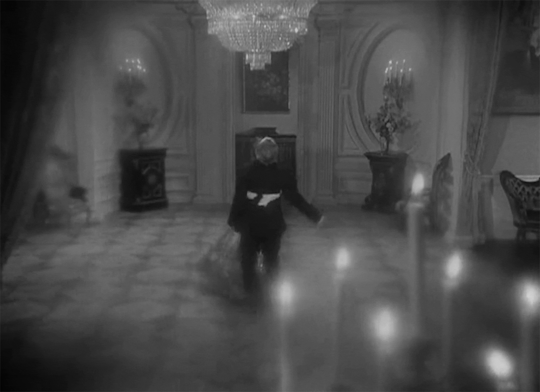
22 notes
·
View notes
Text
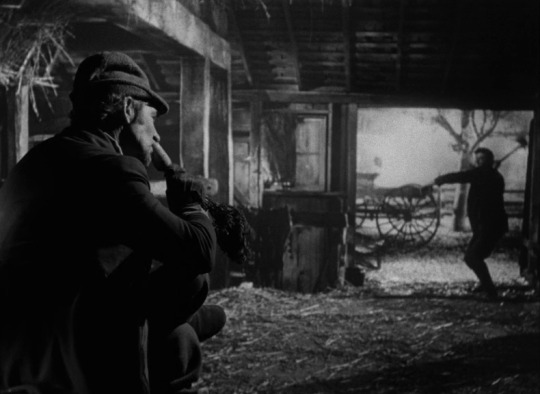

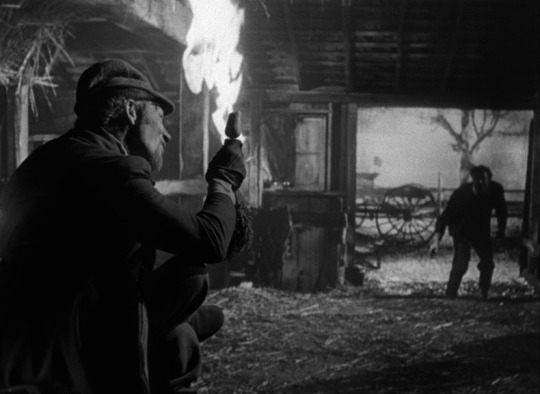
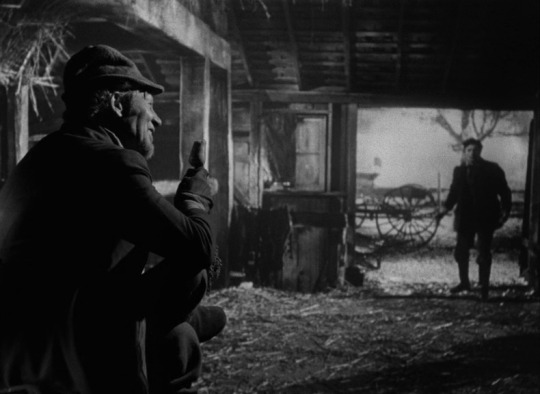
William Dieterle - All That Money Can Buy (1941)
4 notes
·
View notes
Text
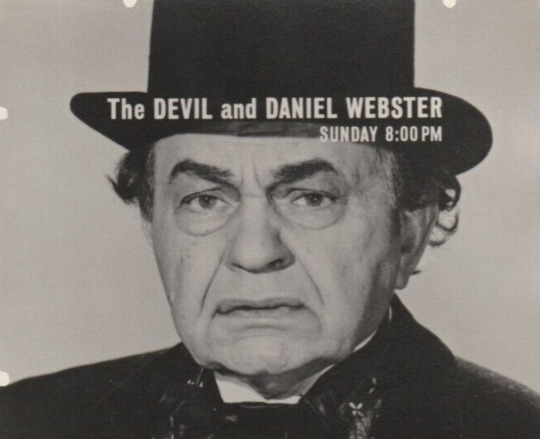
5 notes
·
View notes
Text
You know what adaptation I’d really like to see?
A TV series adaptation for The Devil and Daniel Webster. It was originally a movie back in 1941, and to my knowledge, it hasn’t been remade in any format since.(It is a really good movie though, I highly recommend it).
The original premise of the film is about one man who makes a deal with a man (who is either a demon or the Devil himself, it’s not exactly explained) named Mr. Scratch, who trades him his soul for a more prosperous life for the next seven years. When Scratch comes to collect on their deal, the damned man gets help from an extremely well-respected lawyer, Daniel Webster.
this story could really work as a series, in my opinion. Daniel Webster could be a lawyer who at the beginning of the series, begins to specialize in cases of people who clearly made deals with the Devil and now need to get out of them, it could be an episodic thing.
The Devil could be played by multiple people (as it’s said the Devil takes many forms), and maybe Daniel Webster could even have someone from the Heaven-side helping him, in disguise as a legal aide (and maybe he does or doesn’t know who/what they are).
This is gonna bug me forever. TV WRITERS GET ON THIS!!!!!!
#tv show adaptation#classic films#the devil and daniel webster#modern day adaptation#battle of good vs evil
5 notes
·
View notes
Text
I’m watching The Devil and Daniel Webster and I remembered that Blackbeard was on the jury of the damned, but not Stede too! That’s hilarious. It does annoy me that they keep saying that the jury is all Americans when I thought one of the few things we know about Blackbeard’s life was that he was from Bristol. Anyway,

This is Stede
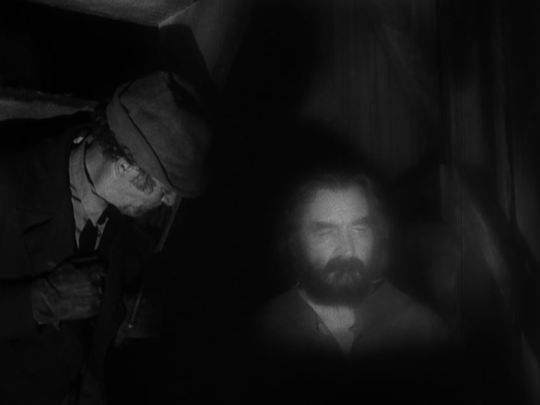
And this is Ed
5 notes
·
View notes
Text
The Devils I Know - Number 18
Welcome to “The Devils I Know!” For this spooky time of year, from now till Halloween, I’ll be counting down My Top 31 Depictions of the Devil, from movies, television, video games, and more! Today’s Devil is truly a silver-tongued classic.
Number 18 is…Walter Huston, from The Devil and Daniel Webster (1941).

Based on the story of the same name, “The Devil and Daniel Webster” is a semi-comedic drama whom many consider to be home to one of the greatest Devils of all of cinema. He’s one of the oldest portrayals on this list, without a doubt. That Devil is Walter Huston as the inimitable Mr. Scratch. The story focuses on a young man, Jabez Stone, who makes a deal with the Devil for seven years of wealth and prosperity. However, in typical fashion, Stone finds that while he does become richer, his private life spirals downward: his wife and later his child both become increasingly distant from him, and his neighbors begin to turn against him.
The only friend Jabez has in the world is Daniel Webster: the famous American lawyer and politician. Webster sympathizes with Stone’s plight, having been visited by Mr. Scratch in the past, himself; however, Webster was wise enough to turn the Devil down. As the due date for Stone’s soul draws nearer, Webster agrees to help him, and thus makes a deal of his own with the Devil: they will put Jabez Stone on trial for what he’s done. If Webster wins, Stone’s soul is returned to him and the deal is off. However, if Webster loses, both he and Jabez Stone will be immediately damned and dragged down to Hell. To make things riskier, the Devil is the one who selects the judge and jury, which turns out to be made up of some of the most notorious figures in American history, such as Benedict Arnold and John Hathorne of the Salem Witch Trials. It’s to this group of cutthroat souls that Webster must make his case.
Huston’s Devil I mentioned before as a huge influence on Tom Waits’ portrayal in “The Imaginarium of Doctor Parnassus,” and if you watch the two movies back to back, you will clearly see why. Mr. Scratch, as depicted in this movie, is much the same way Waits plays his Mr. Nick. Scratch is a jolly imp of a Devil; frequently smiling, merry and mischievous, with a slick tongue and a sly twinkle in his eye. He’s a remarkably loveable scoundrel for the Lord of All Evil, and much of the comedy in the film comes from his wily and wicked interpretation of the Devil. HOWEVER, there’s also a noted dark side to Huston’s Mr. Scratch: as the film goes on, and the stakes grow higher and higher, Scratch becomes and increasingly menacing and spooky character. That gleam in the eye becomes less impish and more truly diabolical. Yet even so, he never loses his sense of humor or his slippery sort of personality, making it hard to truly hate this Devil. When the final scene of the film arrives (I won’t say what it is), it’s hard to tell if we should be laughing or quaking in our boots, and I think that’s the point: we know that Mr. Scratch is rotten to the core, but we can’t help but find him entertaining. That is the magic of this mad demon.
Tomorrow, the countdown continues with Number 17!
HINT: “He…is my Number One…Guy.” (pauses) Well, actually he’s number 17, but you get the idea.
#the devils i know#top 31 devils#fiction#october special#halloween advent calendar#best#favorites#list#countdown#the devil and daniel webster#mr. scratch#walter huston#number 18#movies#films#actors#acting
4 notes
·
View notes
Text
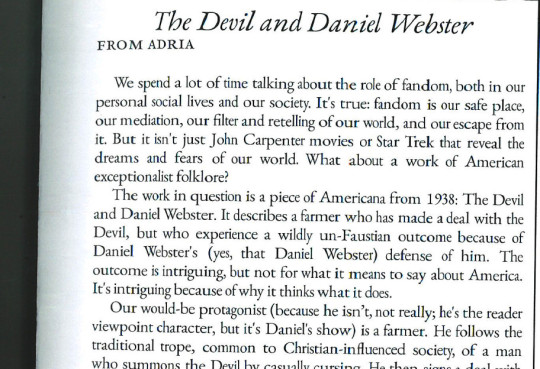
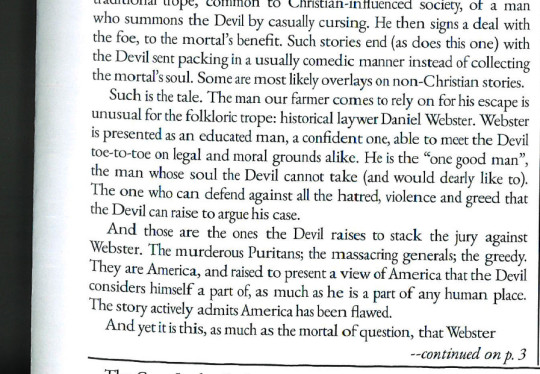
The Devil and Daniel Webster
1/2
From Adria
We spend a lot of time talking about the role of fandom, both in our personal social lives and our society. It's true: fandom is our safe place, our mediation, our filter and retelling of our world, and our escape from it. But it isn't just John Carpenter movies or Star Trek that reveal the dreams and fears of our world. What about a work of American exceptionalist folklore?
The work in question is a piece of Americana from 1938: The Devil and Daniel Webster. It describes a farmer who has made a deal with the Devil, but who experience a wildly un-Faustian outcome because of Daniel Webster's (yes, that Daniel Webster) defense of him. The outcome is intriguing, but not for what it means to say about America. It's intriguing because of why it thinks what it does.
Our would-be protagonist (because he isn’t, not really; he's the reader viewpoint character, but it's Daniel's show) is a farmer. He follows the traditional trope, common to Christian-influenced society, of a man who summons the Devil by casually cursing. He then signs a deal with the foe, to the mortal’s benefit. Such stories end (as does this one) with the Devil sent packing in a usually comedic manner instead of collecting the mortal’s soul. Some are most likely overlays on non-Christian stories.
Such is the tale. The man our farmer comes to rely on for his escape is unusual for the folkloric trope: historical laywer Daniel Webster. Webster is presented as an educated man, a confident one, able to meet the Devil toe-to-toe on legal and moral grounds alike. He is the “one good man”, the man whose soul the Devil cannot take (and would dearly like to). The one who can defend against all the hatred, violence and greed that the Devil can raise to argue his case.
And those are the ones the Devil raises to stack the jury against Webster. The murderous Puritans; the massacring generals; the greedy. They are America, and raised to present a view of America that the Devil considers himself a part of, as much as he is a part of any human place. The story actively admits America has been flawed.
And yet it is this, as much as the mortal of question, that Webster defends. What is a good American man, he argues, if not someone trying to better their pocketbook through all means necessary? (And he does defend a man; women are not included in this statement. America, as presented in this story, is not for us. One might assume the same of Black people. Slavery is mentioned, but it isn't given a representative amongst the Devil's allies. Neither does anyone opposing women's rights. Perhaps those aren't sufficiently of the Devil.)
Part 2
0 notes
Text
Short Story Review: The Devil and Daniel Webster/Stephen Vincent Benet
link:
http://gutenberg.net.au/ebooks06/0602901h.html
The concept of a lawyer defending someone who sold his soul to the Devil, arguing with the Devil himself, is very cool, but I feel that the story disappointed me on the delivery. I kept on waiting for something to happen and was let down by the ending; and while I get the ending I can think of ways to make it stronger, especially since SVB knows how to use strong, descriptive language.
0 notes
Photo

Walter Huston in The Devil and Daniel Webster (William Dieterle, 1941)
Cast: Walter Huston, Edward Arnold, James Craig, Anne Shirley, Jane Darwell, Simone Simon, Gene Lockhart, John Qualen, H.B. Warner, Frank Conland, Lindy Wade, George Cleveland. Screenplay: Dan Totheroh, based on a story by Stephen Vincent Benet. Cinematography: Joseph H. August. Art direction: Van Nest Polglase, Alfred Herman. Film editing: Robert Wise. Music: Bernard Herrmann.
With its historical figures and rural setting The Devil and Daniel Webster could have sunk into sentimental Americana, but it stays just shy of that with the help of a good screenplay, solid direction, and most of all some fine performances, particularly Walter Huston as Mr. Scratch and Edward Arnold as Webster, a turn away from Arnold's usual fat-cat persona. (Arnold was a replacement for Thomas Mitchell, injured in an on-set accident just after filming started.) Bernard Herrmann's Oscar-winning score, giving a sophisticated twist to old folk tunes like "Pop Goes the Weasel," and Joseph H. August's moody cinematography also help. James Craig gives a solid performance as Jabez Stone, the victim of Scratch's soul-buying, especially in his scenes with Simone Simon as the little devil Belle, sent to tempt him.
1 note
·
View note
Text
Angel Heart (1987) dir. by Alan Parker is based on the novel Falling Angel (1979) by William Hjortsberg. It was also adapted into an opera. The sequel Angel’s Inferno was published posthumous in 2020.
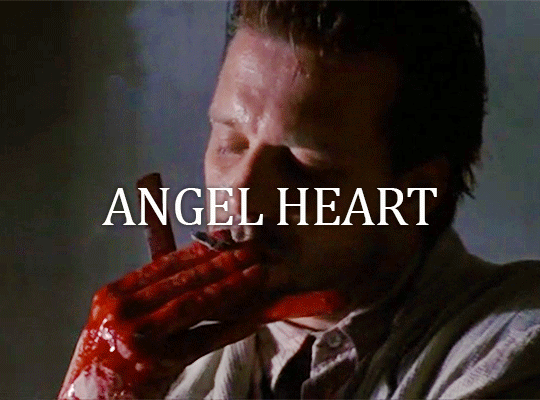
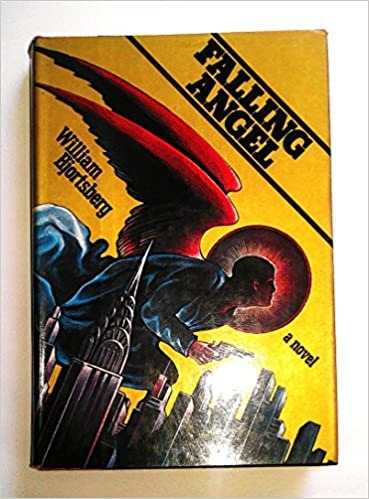
👹According to Nette (2020) the original novel was supposedly influenced by Benét’s 1936 short story, ‘The Devil and Daniel Webster’, about a New Hampshire farmer who sells his soul to the devil and is defended by Daniel Webster, a fictional take of the famous 19th century American statesman and lawyer.
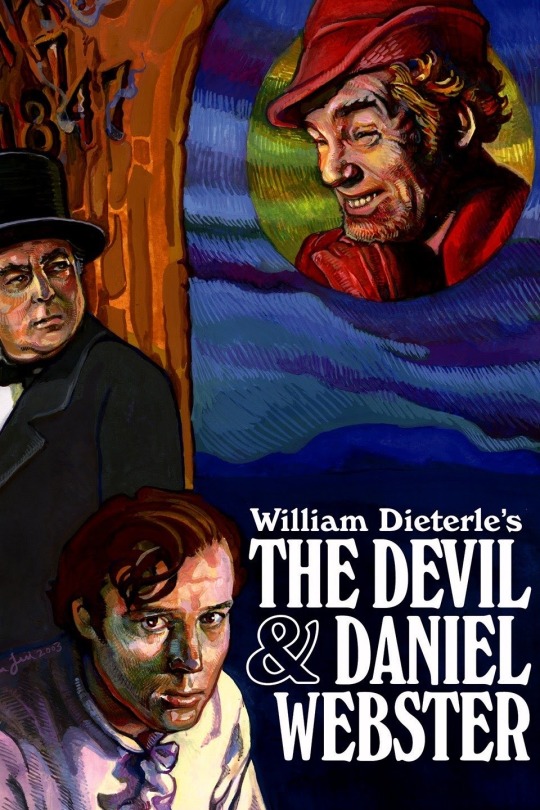
However, I would think that as Krzywinska (2000) has said this is a version of the Faust story, so it is hundreds of years old. It would be interesting to find out why the European Faust folklore has settled into blues myths, such as the story of Robert Johnson🎸

🕵️♂️Angel Heart’s strength derives from how its fuses the familiar noir trope of the hard-drinking gumshoe who takes an apparently simple case that warps into something far more complex and dangerous, with a genuinely disturbing horror element. (Nette 2020)
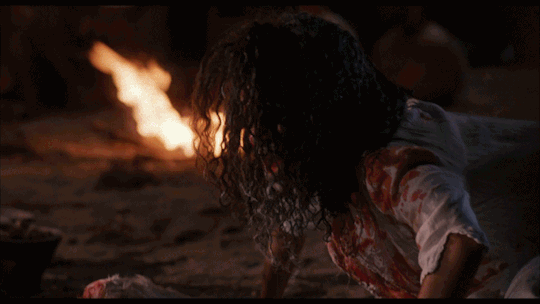
👄Equally, the story contains material like the myth of Oedipus. It was quite a scandal when one of the "Cosby children" was f*** on the screen in a bloody rain as voodoo priestess Epiphany (with her father).

✝️The film Angel Heart is somewhat interested in the origins of voodoo (vodoun, hoodoo). However, the emphasis is on the symbols of Christianity. Voodoo is in this movie simply a Devil’s tool. This is also the effectiveness of the film. No voodoo dolls and zombies here🧟
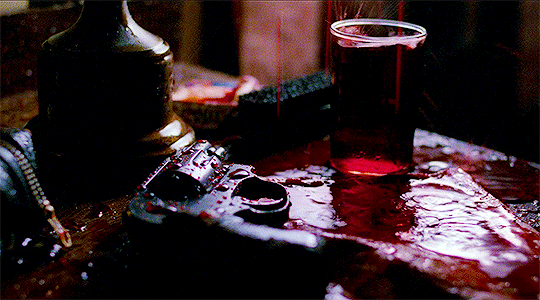
🎶What I love in this movie is what Krzywinska (2000) has stated: ”The film rarely spells things out explicit, and in the main operates through association, and this is the principle that guides the connection between voodoo and Satanism.” Only Satanic perhaps? I also love the use of music in this movie. Blues, gospel, voodoo drums, lonely untuned piano and spiritual church music mixed with jazz saxophone and heartbeat sounds❤️
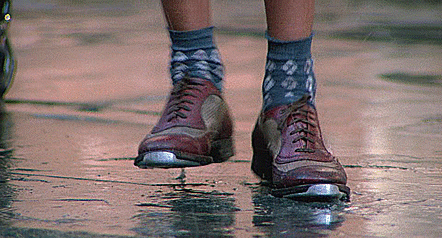
Sources:
Nette, Andrew. 2020. The long, dark… crimereads.com
Krzywinska, Tanya. 2000. Skin for Dancing In.
#movies#hoodoo#voodoo#mickey rourke#lisa bonet#robert de niro#hjortsberg#witchcraft#alan parker#devil#satanic#angel heart#falling Angel#Blues#Faust#Mephisto#daniel webster#cinema#horror film
18 notes
·
View notes
Text
Daniel Molloy randomly showing his affinity for attractive women in TDM
"Want to come take my arm?"

"A young girl inside the warmth of the store picked up a copy of Lestat's book, then stared at him through the window. His breath made steam on the glass in front of him. Don't worry, my darling, I am a rich man. I could buy this whole store full of books and make it a present to you.
Want to come take my arm?" -The Queen of the Damned
Daniel Molloy randomly demonstrating his affinity for attractive women in TDM
"…My beauties, my poor beauties…"

"It was coming now every time he closed his eyes. And each time, it was longer, more full of detail. The red-haired twins were so tenderly beautiful. He did not want to hear them scream."
"…My beauties, my poor beauties…" -The Queen of the Damned
Daniel Molloy randomly demonstrating his affinity for attractive women in TDM
#merriam-webster's field guide to identifing bisexuals in canon queer media#bisexual daniel molloy#Vampire chronicles#daniel molloy meta#Iwtv amc#Amc iwtv#Daniel molloy#devils minion#Devil's Minion#The Devil's minion#Interview with the vampire#Iwtv#Iwtv2022#TQOTD text quotes
3 notes
·
View notes
Text
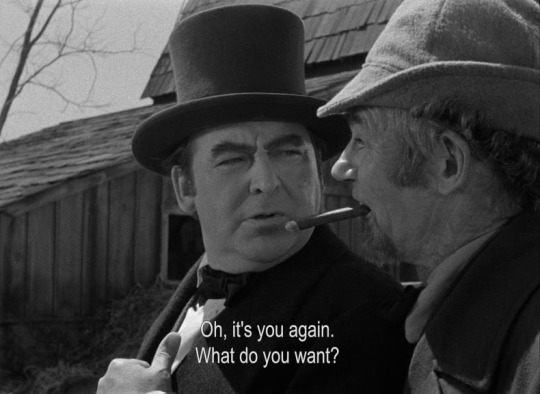
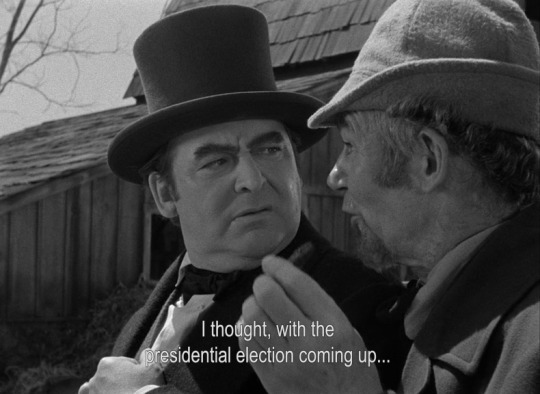

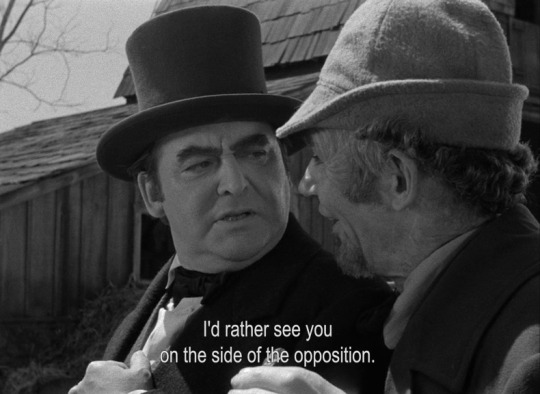
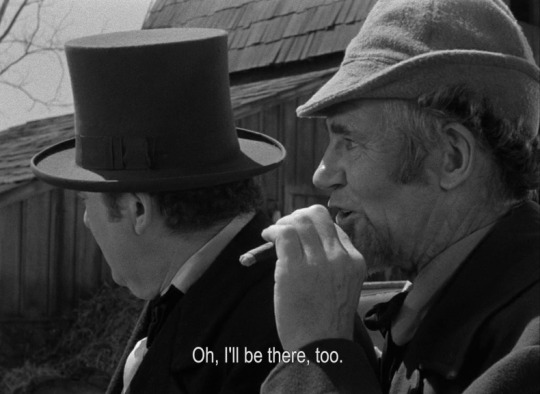
William Dieterle - All That Money Can Buy (1941)
#film#william dieterle#all that money can buy#the devil and daniel webster#edward arnold#walter huston#1941
2 notes
·
View notes
Text
the devil went down to georgia! triumvirate au
#the great triumvirite#daniel webster#henry clay#john c calhoun#henry clay is the fiddle player#but the way that either cal or dan could be the devil...
1 note
·
View note
Text
youtube
Trailer for the classic supernatural tale. Jabez Stone (James Craig) is a struggling farmer who sells his soul to the Devil (Walter Huston) for seven years of good luck. When the seven years runs out and Satan comes to collect, Stone is helped by the great Daniel Webster (Edward Arnold) to reclaim his soul by trying his case before a jury of famous condemned men like Benedict Arnold and Blackbeard!
1 note
·
View note
Text
References in Servamp
Arabian mythology
Jinn. Ch. 16
Greek mythology
Elpis. Ch. 75
Moirai. Ch. 108
Pandora. Ch. 130
Pygmalion. Ch. 123
Pandora's Box. Ch. 97
Japanese mythology
Gashadokuro. Ch. 129
Kitsune. Ch. 3
Raijin. Ch. 85
Norse mythology
Baldr. Ch. 39
Freya. Ch. 65
Frey. Ch. 131
Gleipnir. Ch. 101
Hati. Ch. 91, 131
Hod. Ch. 39
Hliðskjálf. Ch. 96
Idunn. Ch. 65
Loki. Ch. 15
Mimir. Ch. 29
Mjölnir. Ch. 53
Ragnarök. Ch. 101, 122, 131
Sigurd. Ch. 101
Thor. Ch. 41
Yggdrasil. Ch. 42
Biblical references
Abel. Ch. 8
Adam. Ch. 128
Boaz and Jachin. Ch. 42
Eden. Ch. 21
Eve. Ch. 1
John the Baptist. Ch.122
Lucifer. Ch. 135
Nod. Ch. 29, events
Hinduism
Asura. Ch. 57.5, 89.
Tarot
The Fool - Mahiru. Ch. 50
I. The Magician – Night trio. Ch. 41
II. The High Priestess – Mikuni. Ch. 42
V. The Hierophant - Shuhei. Ch. 77
X. Wheel of Fortune - Junichiro. Ch. 53
XII. The Hanged Man - Tsurugi. Ch. 50
XV. The Devil – Shamrock. Ch. 72
XVI. The Tower - Touma. Ch. 47
XVII. The Star - Iduna. Ch. 73
XVIII. The Moon - Yumikage. Ch. 69
Literary references
"Alice's Adventures in Wonderland" Lewis Carroll. Ch. 3, 4, 7, 19, 98, 122. Misono, Lily, Dodo, Mitsuki, Yamane, Hattori, Mikuni, Bad B and Good B.
"As You Like It" William Shakespeare. Ch. 10, 38.5. Mikuni's spell.
"My Fair Lady" English nursery rhyme. Ch. 10 Mikuni's spell.
"Dracula" Bram Stoker. Ch. 12, 30. Hugh.
"Romeo and Juliet" William Shakespeare. Ch. 23, 34. Hyde, Ophelia.
"Faust" by Johann Wolfgang von Goethe. Ch. 29 Johannes.
"Through the Looking-Glass" Lewis Carroll. Ch. 29, events. Mikuni, Johannes.
"Julius Caesar" William Shakespeare. Ch. 23 Hyde.
"Strange Case of Dr. Jekyll and Mr. Hyde" Robert Stevenson. Ch. 23, 37. Hyde, Licht.
"Macbeth" William Shakespeare. Ch. 24, 31. Kuro, Saint Germain, Mahiru.
"Night on the Galactic Railroad" Kenji Miyazawa. Ch. 26. Higan.
"The Little Prince" Antoine de Saint-Exupéry. Ch 30, 67. Kuro, Mahiru, Sloth demon, Gear, probably Jeje.
"Hamlet" William Shakespeare. Ch. 33, 34. Hyde, Ophelia.
"The Phantom of the Opera" Gaston Leroux. Ch. 36 Licht and Hyde technique.
"Peter and Wendy" James Barry. Ch. 44, 56, 74. Tsurugi, Touma, Mahiru.
"Ring a Ring o' Roses" nursery rhyme. Ch. 53 Junichiro's spell.
“Peter Pan in Kensington Gardens” James Barry. Ch. 53, 75. Tsurugi, Touma.
"Death in Venice" Thomas Mann. Ch. 55 Gilbert technique.
"Total Eclipse" a play by Christopher Hampton. Ch. 55 Rayscent's technique.
"The Morning of the Last Farewell" Kenji Miyazawa. Ch. 57.5 Tsubaki.
"Spring and Asura" Kenji Miyazawa. Ch. 57.5 Tsubaki.
"The Catcher in the Rye" Jerome Salinger. Ch. 62 Shuhei.
"Four and Twenty Blackbirds" Agatha Christie. Ch. 62 Shuhei's spell.
"Metamorphosis" Franz Kafka. Ch. 62 Shamrock technique.
“The Nighhawk's Star” Kenji Miyazawa. Ch. 62, 76. Shamrock technique.
"Rock-a-bye Baby" an English lullaby. Ch. 70 Touma's spell.
“Schlafe, mein Prinzchen, schlaf ein” lullaby. Ch. 70 Touma's spell.
"Who Killed Cock Robin" an English nursery rhyme. Ch. 70 Yumikage's spell.
"The Wonderful Wizard of Oz" Lyman Frank Baum. Ch. 70, 88. Tsukimitsu brothers’ spells.
"Daddy-Long-Legs" Jean Webster. Ch. 74. Dark Night Trio, Touma.
"The Divine Comedy" Dante Alighieri. Ch. 118, 120, 121. Niccolo, Ildio, Gluttony demon.
“A Brute's Love” (人でなしの恋) Edogawa Rampo. Ch. 122 Mikuni, Lily.
"Coppelia" ballet Leo Delibes. Chapter 122 Mikuni, Lily.
"Salome" Oscar Wilde. Ch. 122 Mikuni, Lily.
"Turandot" opera by Giacomo Puccini based on the play by Carlo Gozzi. Ch. 129. Lily's technique.
"The Tempest" William Shakespeare. Ch. 131. Licht and Hyde.
"The Old Man and the Sea" Ernest Hemingway. Ch. 134 Hugh.
"Flowers for Algernon" Daniel Keyes. Ch. 135 Hugh.
"Jane Eyre" Charlotte Brontë. Ch. 136. Hokaze.
"Madama Butterfly" opera by Giacomo Puccini. Ch. 136. Lily.
"Hansel and Gretel" the Brothers Grimm. Ch. 140. Faust and Otogiri.
Music
"Für Elise" by Ludwig van Beethoven. Ch. 34
"Jesu, Joy of Man's Desiring" by Johann Sebastian Bach. Ch. 125
Movies
"It's a Wonderful Life" (1946). Ch. 131
"Life is Beautiful" (1997). Ch. 131
I believe this list can be expanded. Somewhere I’ve written only chaps when some reference was mentioned for the first time and omitted all further mentions.
Special thanks to hello-vampire-kitty, joydoesathing and passmeabook, because some works wouldn’t be included in the list without their observations.
199 notes
·
View notes